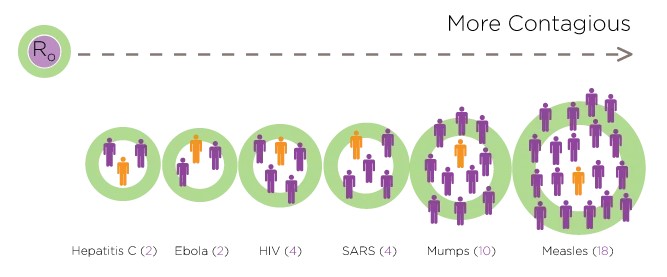Focus: GS-III Disaster Management
Why in news?
On March 20, Italy reported 5,900-odd fresh cases and 627 deaths, the highest daily tally of mortality reported from anywhere in the world.
‘Age’ Factor in Europe?
- Europe, after the tumult of two World Wars, had embarked on the road to recovery through mutual cooperation, exemplified by the Maastricht Treaty in 1993, which established it as a union of constituent nations, a borderless region to facilitate trade and the free movement of people.
- The union, reinforced by the post-War emphasis on welfare, led to the western side of the continent establishing some of the most advanced health care systems, which resulted in the high life expectancy rates seen now.
- Indeed, death rates exceeded birth rates, putting the population in a state of decline where the net replacement rate was less than one.
- Thus, Europe aged, even as it became relatively wealthy.
Why Italy?
- Italy’s famed Colosseum and other attractions drew millions of tourists each year, making the country the fifth most popular tourist destination.
- An open border meant that the incoming tourist could travel anywhere in Europe.
- Perhaps these factors, that is, an ageing population, a high rate of internal migration, and a constant flow of tourists proved to be its undoing when the pandemic came knocking at its door.
- Importantly, contact tracing from Patient #1 did not work in Italy. The country, along with Spain (the second most affected country in Europe) is popular with retirement planners. Its beaches and villas have attracted several post-retirement settlements.
- Thus, a rapidly multiplying cluster of infections, which affected a predominantly older population, put a severe strain on one of the most developed health care systems in the world.
- Perhaps the most significant aspect of this epidemic in Italy was the response from the people. They were not used to restrictions. They could not follow the stringent discipline enforced in China. Nearly 44,000 people have been booked across the country for defying prohibition orders.
R0 (Pronounced: R – Naught)
- It’s a mathematical term that indicates how contagious an infectious disease is. It’s also referred to as the reproduction number.
- In epidemiology, the R0 of an infection can be thought of as the expected number of cases directly generated by one case in a population where all individuals are susceptible to infection.

- The R0 for Covid-19 has been estimated to range from 1.5 to 3.5 and to effectively stop the pandemic, we need to reduce this to less than 1.
- This is what is meant by “flattening the curve”, a term that has gone viral in social media, which possibly explains why the benefits of quarantine and social distancing have gained social acceptance so quickly.
Significance of R0
Three possibilities exist for the potential spread or decline of a disease, depending on its R0 value:
- If R0 is less than 1, each existing infection causes less than one new infection. In this case, the disease will decline and eventually die out.
- If R0 equals 1, each existing infection causes one new infection. The disease will stay alive and stable, but there won’t be an outbreak or an epidemic.
- If R0 is more than 1, each existing infection causes more than one new infection. The disease will spread between people, and there may be an outbreak or epidemic.
Importantly, a disease’s R0 value only applies when everyone in a population is completely vulnerable to the disease. This means:
- no one has been vaccinated
- no one has had the disease before
- there’s no way to control the spread of the disease
What make Coronavirus more deadly?
- What makes Covid-19 different from flu is the fact that humans lack antibodies to fight it, which is why it is termed “novel”.
- By implication, this means the lack of effective treatment and hence a higher mortality rate.
- As the case count increased from a few hundred to several thousands, China’s apparently draconian lockdown worked to ebb the spread of the disease.
- The measures, which appear to have struck a wrong chord with Europeans, have had fatal consequences.
Issue of Asymptomatic cases
- Eighty per cent of COVID-19 patients were asymptomatic, thereby reducing the total positive tests in comparison to the prevalence of the disease.
- However, 40 per cent of those diagnosed positive also required hospitalisation, 12 per cent required intensive care, a few among them the most critical equipment.
- Perhaps no other disease that we know in modern medicine has required such a high level of ventilator utilisation.
- What started as a small number escalated rapidly to several thousands.
Other Factors of the Outbreak
- A significant feature of the outbreak in its early days was the high infection rate among health care personnel, which had a significant impact on the system’s ability to treat the surge of cases.
- The high rate of mortality has also been attributed to the drug Ibuprofen, an over-the-counter pain reliever as well as an antipyretic whose availability has been duly curtailed since then. Ibuprofen lowered the subjects’ immune response, which hampered their recovery.
What can India Learn from Italy?
- With a predominantly young population, India may appear deceptively to be at an advantage.
- However, India cannot afford to be complacent.
- Vigilant screening and isolation of suspected cases needs to be done.
- The country is still in stage II (local transmission), during which training to health care professionals, vigorous contact tracing and improved testing capacity should be the immediate priority.
- Ramping up ICU beds and arranging for ventilators for urgent use requires to be a key priority.
- The best way India can manage this epidemic is by stopping its spread in a densely populated country with high levels of air pollution and a high prevalence of respiratory diseases.





